Mainstream media talks how games have bad influence on kids/adults, which is not exactly true IMHO, but even they can't deny that there is one genre which has huge positive outcome on our brains. Micromanagement, macromanagement, reflexes, skills to react fast, ability to evaluate risks and many more, RTS is all about those things.
I started playing RTS game in mid 90-es, and first one was Dune II, it was on old 386 PC but will talk about this game in next post. Right now want to tell you about RTS games which were before the Dune, between 1981 and 1991. I personally have not played all of them, as it's not easy to find and make them work on modern desktop PCs, so in this part of article series will take some data/synopses from wiki and other articles just to share how RTS games developed during 80-es.
Utopia (1981)
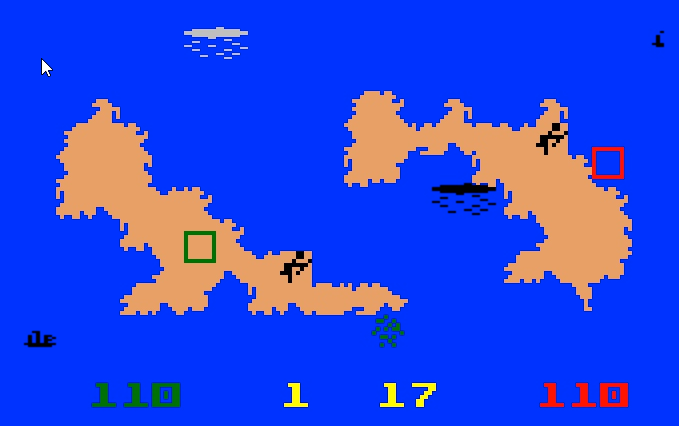
Utopia, is arguably the earliest ancestor of the real-time strategy genre.
Utopia is a two-player game in which the two players each control one of the game's two islands. It lacks an AI opponent, although a single player can play to achieve a high score and ignore the other island. When starting the game, the players may choose how many rounds to play (up to 50) and the length of each round (30 to 120 seconds). The winner is the player with the most points at the end of the game.
You had to think about infrastructure, manufacturing, military, weather patterns, spies, pirates, and the knock-on effects of every decision.
GameSpy included Utopia in its Hall of Fame in 2004, commenting': "Considering the state of home video-game technology in 1981, Utopia is an astonishingly detailed simulation."
Cytron Masters (1982)
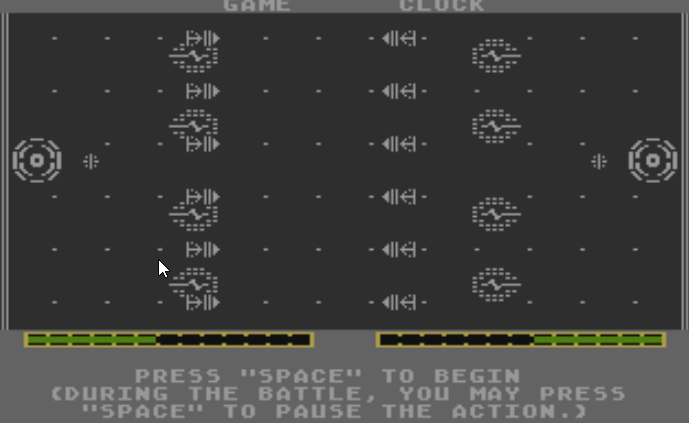
It was developed by Dan Bunten's company, Ozark Softscape and released for the Apple II in July or August 1982.
In the game each player takes the role of the commander, represented on-screen in Command Centers located on opposite sides of the screen. Scattered around the screen are eight "generators" that produce energy. The energy produced by these generators is the resource in the game, similar in function to the more tangible resources gathered in modern RTS games. Energy can then be "spent" to produce the Cytrons, robot warriors, as well as using it to move them about, fire, and other duties.
Gameplay is somewhat chess-like, a battle for position. Bunkers and mines become important along the front lines, protecting friendly units from attack while they are developed forward.
Legionnaire (1982)
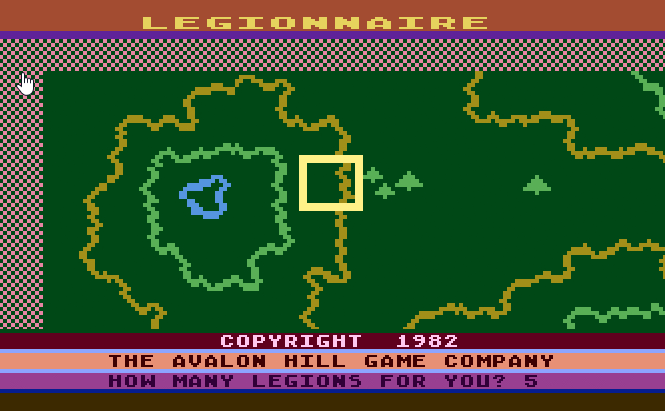
Legionnaire is a computer game for the Atari 8-bit series created by Chris Crawford in 1982, and released through Avalon Hill. Recreating Julius Caesar's campaigns in a semi-historical setting, the player takes command of the Roman legions in real-time battles against the barbarians.
The player took the side of the Romans, playing the role of Caesar, giving orders to their forces in real time. The computer played the barbarians, in blue, with the player's legions in pink. There were three types of units; infantry was represented by a sword, cavalry as a horse head, and Caesar's own Imperial Guard as an eagle. Orders were given to the units by moving a cursor over them with the joystick and then holding down the joystick button; existing commands would be displayed as a moving arrow, and new orders could be entered by pressing the joystick in the four cardinal directions. While the user was entering the orders for their units, the computer was calculating moves for its own units.
Stonkers (1983)
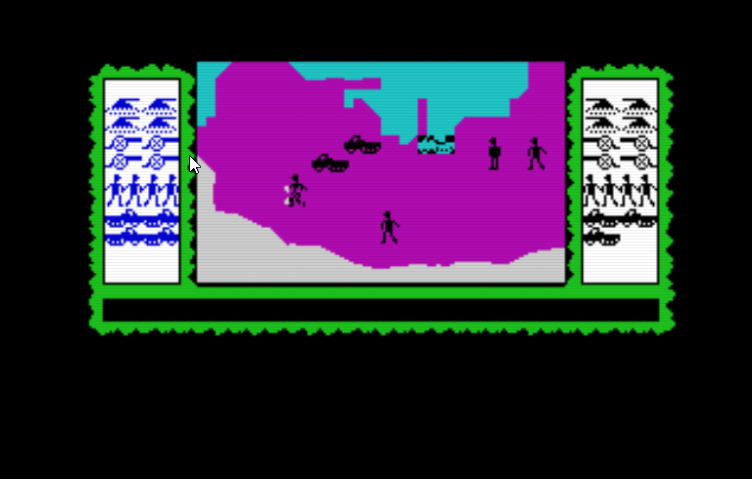
It was written for the ZX Spectrum and published by Imagine Software in 1983.
Stonkers is controlled either using keyboard or joystick. In the game, the player controls infantry, artillery, tank, and supply-truck units. Combat units consume supplies over time and the player must use the supply units to replenish them. Supply units are unloaded while a ship docks at the player's port. Information about ongoing events is displayed in a ticker tape on the bottom of the screen.
The game was plagued with bugs and early versions crashed after a few minutes of play. Despite this, it was awarded the title "Best Wargame" by CRASH in 1984.
Nether Earth (1987)

It was released for the Amstrad CPC, ZX Spectrum and Commodore 64 in 1987.
The player controls a flying machine which can fly over any part of the play-area and is used to command the player's bases and robots. In essence it replaces a mouse cursor, but it can hinder the robots' movement. The player must build robots and give them orders to seek out and attack Insignian robots and capture neutral or enemy factories to increase production and thus aid the war effort. Once a robot is issued an order it will keep being active until all its targets have been conquered or destroyed, the robot itself is destroyed, or other orders are received. The ultimate objective is to capture or destroy all the enemy bases and thus win the war. The game is displayed in forced-perspective isometric graphics.
Modem Wars (1988)
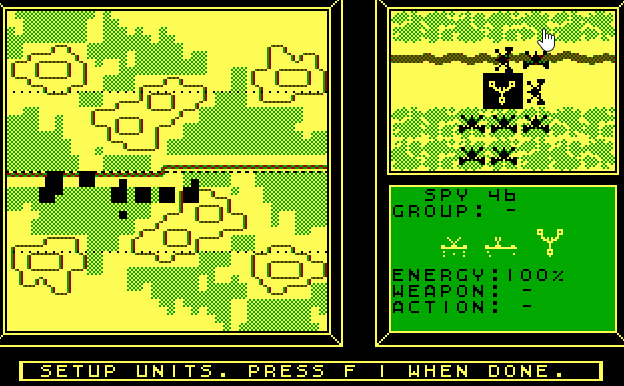
The first multi-computer online game, Modem Wars was played over a modem connection between two machines (via telephone or null modem serial connection), with both players controlling a group of robotic units trying to eliminate the opponent's command center. Features such as fog of war, varied unit types, terrain, and formations, all now standards in the genre, were implemented despite the daunting technical limitations of late 1980s computers.
Each player is presented with a map of which they control the lower half. Across the center is a line, below which they can set up their units. Each unit which crosses this line gains a point. If the ComCen crosses it, many additional points are scored. A second line is three quarters of the way up the screen; crossing it with units gives additional points. Crossing it with the ComCen is one way to win the game.
The map is made up of multiple types of terrain. Most of the space is clear, but there are also woods, which slow movement and reduce visibility, and hills, which slow movement and allow units atop them to have a small range and damage bonus, while those climbing have a small damage penalty.
Optionally, a Recycler space can be made available, which will regenerate destroyed units. A recycled unit must be moved off the Recycler for another unit to appear, and it can be blocked by enemy units. There are three options: None, Half, and Full; Half will recycle only half the units you've lost.
Herzog Zwei (1989)
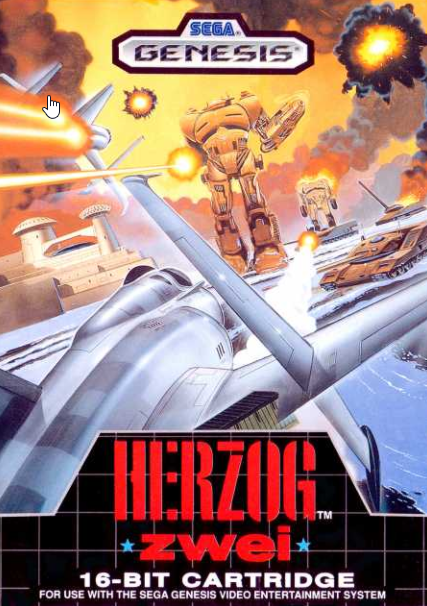
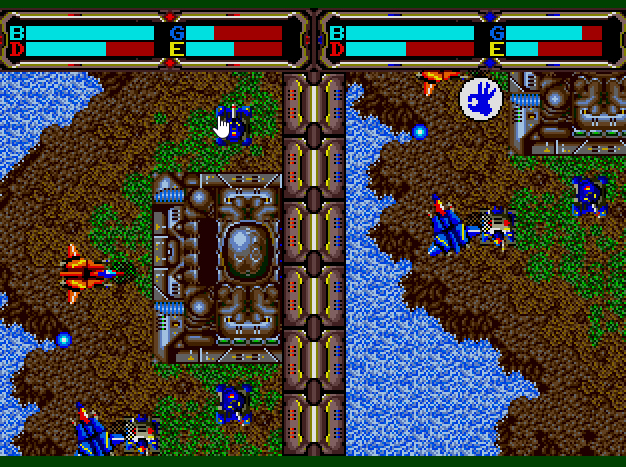
This one I've played about 2 years ago, bought Sega Genesis and an Herzog Zwei on Ebay, in overall it costed little over 100$ including delivery. I must say, it was worth every penny.
It's multiplayer online battle arena games predecessor, you control one of two fighting mechs, able to transform between air and land forms, it also carries various units which you can assign commands. Game requires good micromanagement and it's pretty challenging. There are 9 bases plus your main base and even when you play with AI it's quite hard.
Herzog Zwei supports singleplayer mode vs AI and and two-player mode. Sadly i have not found anyone with who i would play so it was single player mode for me.
Planing to replay it in near future and will try to somehow record gameplay.
From Wiki:
David Filip of Allgame gave the game a score of 4 out of 5 stars, describing it as "one of the first" and "one of the best" strategy video games on home consoles and as "a fine cure for those days when you want a different kind of RTS to control." Daniel Thomas of Sega-16 gave it a score of 10 out of 10 in 2004, describing it as "very probably the finest video game you've never played" and as the Genesis console's "finest hour." Lawrence Wright of Insomnia gave the game a score of 5 out of 5 stars in 2008. GameSpot users have given Herzog Zwei an average score of 8.8 out of 10 as of 2009.
Powermonger (1990)

The game features a 3-dimensional game map, although camera movement is limited to rotating the map by 90 degrees or small discrete intervals and 8 pre-defined levels of zoom. Only the map topography itself is 3-dimensional; people, trees and other game objects are 2-dimensional sprites. The game also features a fairly advanced (for its time) "artificial life" engine. Each person seems to have a mind of their own and will go about his or her job, fishing, farming, shepherding, collecting wood or making items without any input from the player. You also have a query tool that can be used to see the name, sex, age, allegiance, vital stats, hometown and equipment for any given person you click on. This aspect of the game has some clear resemblances (though less advanced) with the later Black & White game also designed by Peter Molyneux.
The player starts out on each map with a small number of soldiers, and maybe a few towns already under control. To win the map, the balance of power needs to be tipped completely to the player's side (represented by a scale below the mini-map), by conquering all (or at least most) of the towns on the map, and killing any opposing captains. Once a town is under the player's control, locals can be drafted into the player's army and bigger towns or enemy armies can be taken on. Some of the bigger towns also have neutral captains and if these survive the battle they come under the player's command as well.
Command HQ (1991)
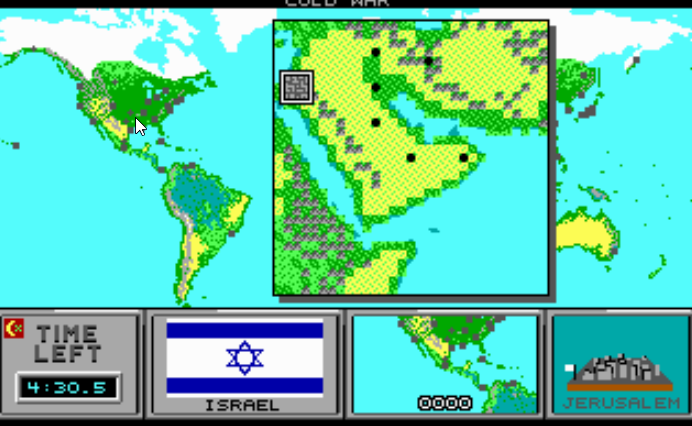
Command HQ is a real-time strategy world domination game. It was released in 1990 by MicroPlay software and was created by Dan Bunten.
While Command HQ was recognized as one of the earliest real-time strategy games for the PC, it was preceded by the Ancient Art of War and other trailblazers. However, unlike these games it has elements of unit production and resource use that would later be expanded in games like Dune II and Command and Conquer. Its user interface was also ahead of its time in its use of the mouse to plot movement and the clear presentation of game data. Another innovation was for two players to play against each other with their computers connected over a modem. Players simulate a variety of global wars through time - 1918 (World War I), 1942 (World War II), 1986 (World War III), 2023 (alternative history) and a post-apocalyptic future in which each player starts from a random position with no knowledge of their surroundings.
Mega Lo Mania (1991)
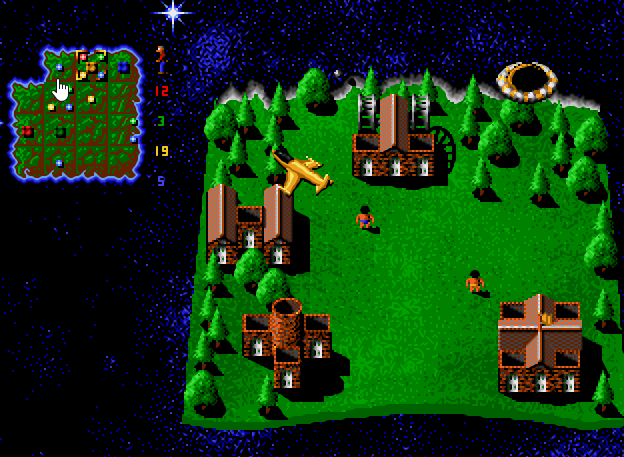
Mega lo Mania is a real-time strategy computer game developed by Sensible Software. It was released for the Amiga in 1991, and ported for a variety of other platforms.
In Mega Lo Mania, you had to allocate people to roles: researching new technologies, gathering/mining/refining the resources needed to get more advanced weaponry, breeding more people, or expanding your army.
Mega lo Mania is considered to be the first Real time strategy game to also incorporate a technology tree and was met with universal acclaim on its original release.
P.S.
As i told at start i have not played most of those games, because at the release time i was too young and now it's really hard to launch those games, though still possible, but i doubt experience will be at same level with someone who did play those games in 1980-s.
In Next article will cover games which i played starting with Dune II and ending with Empire Earth in 2001.
Hope you liked it, i appreciate every follow, upvote or comment.
Herzog Zwei was great! I never tired of playing it, back in the day.
Yep it's very good, planing to buy some other Sega Genesis games, i still remember how good they were, Desert strike and Jungle Strike were my favorites
Hi, bekari! I just resteemed your post!
I can also re-steem and upvote some of your other posts
Curious? Check out @resteembot's' introduction post
PS: If your reputation is lower than 30 re-blogging with @resteembot only costs 0.001 SBD
I was born after these games but my uncles showed me them when I was younger so I grew up on these gems! Thanks for a trip down memory lane!